Key Takeaways
1. Define a clear long-term goal and identify sprint questions
"Why are we doing this project? Where do we want to be in six months, a year, or even five years from now?"
Set ambitious goals. Start your sprint by defining a clear long-term goal that reflects your team's principles and aspirations. This goal will serve as a beacon to keep everyone moving in the same direction throughout the sprint. Don't worry about overreaching; the sprint process will help you find a good starting point and make real progress toward even the biggest goal.
Identify key questions. After setting the goal, list out sprint questions that represent the unknowns and potential risks that stand between your team and the long-term goal. These questions will guide your solutions and decisions throughout the sprint, providing a quasi-checklist that you can refer to and evaluate after Friday's test. Examples of sprint questions:
- Can we explain our product to people who have never tried it?
- Will customers trust our expertise?
- Can we help an individual understand our product before their team joins?
2. Map the challenge and choose a target
"Like Gene Kranz and his diagram of the return to planet earth, you and your team will lay out the basics: your long-term goal and the difficult questions that must be answered."
Create a visual map. Draw a simple diagram representing the customer's journey through your product or service. This map should include:
- Key actors (customers, staff, etc.) on the left
- The ending (goal achieved) on the right
- 5-15 steps in between showing how customers interact with your product
Choose a target. After creating the map, the Decider (usually the CEO or project leader) should choose one target customer and one target event on the map. This decision will become the focus for the rest of the sprint—the sketches, prototype, and test all flow from this choice.
3. Sketch competing solutions individually
"Group brainstorming is broken, but there is a better way."
Work alone together. Instead of traditional group brainstorming, have team members work independently to develop solutions. This approach allows for deep thought and generates diverse ideas without groupthink. The four-step sketch process includes:
- Notes (20 minutes): Review existing information and take notes.
- Ideas (20 minutes): Jot down rough ideas and circle the most promising ones.
- Crazy 8s (8 minutes): Rapidly sketch eight variations of your best idea.
- Solution sketch (30-90 minutes): Create a three-panel storyboard of your strongest solution.
Embrace imperfection. Remember that artistic skill is not important; anyone can sketch a great solution using simple shapes, stick figures, and words. The focus should be on communicating ideas clearly and solving problems creatively.
4. Make smart decisions without lengthy debate
"The sprint gives our startups a superpower: They can fast-forward into the future to see their finished product and customer reactions, before making any expensive commitments."
Use structured decision-making. To avoid endless debates and make efficient decisions, follow the five-step "Sticky Decision" process:
- Art museum: Display solution sketches on the wall.
- Heat map: Silently review and mark interesting parts with dot stickers.
- Speed critique: Quickly discuss highlights of each solution.
- Straw poll: Each person votes for their favorite solution.
- Supervote: The Decider makes the final choice.
Trust the Decider. While team input is valuable, ultimate decision-making authority should rest with the Decider. This ensures clear direction and prevents decision paralysis. If there are multiple strong, conflicting ideas, consider prototyping them in a "Rumble" to test head-to-head with customers.
5. Create a realistic prototype in just one day
"Fake it."
Adopt the prototype mindset. To build a realistic prototype in just one day, embrace these principles:
- You can prototype anything
- Prototypes are disposable
- Build just enough to learn, but not more
- The prototype must appear real
Focus on the façade. Create a "Goldilocks-quality" prototype that's realistic enough to evoke honest reactions from customers, but not so polished that it takes too long to build. Use tools that allow for rapid prototyping, such as Keynote or PowerPoint for digital products, or modify existing objects for physical products.
Divide and conquer. Assign roles to team members:
- Makers: Create individual components
- Stitcher: Combine components seamlessly
- Writer: Craft realistic text and content
- Asset Collector: Gather necessary materials
- Interviewer: Prepare for customer interviews
6. Test with target customers to gain valuable insights
"Five is the magic number."
Conduct five interviews. Testing with just five carefully selected target customers is enough to identify the most important patterns and insights. This approach balances efficiency with valuable learning. Structure each interview using the Five-Act Interview format:
- Friendly welcome
- Context questions
- Introduce the prototype
- Tasks and nudges
- Quick debrief
Observe together. Have the entire sprint team watch the interviews together, taking notes on sticky notes. This collaborative observation allows for immediate pattern recognition and prevents misinterpretation of results. Use a simple grid to organize notes, with columns for each customer and rows for different aspects of the prototype.
7. Learn and plan next steps based on customer feedback
"A winner every time."
Identify patterns. After the interviews, review the collected notes as a team. Look for patterns that emerge across multiple customers, paying special attention to strong reactions (positive or negative). Categorize these patterns and insights as they relate to your sprint questions and long-term goal.
Determine next steps. Based on the patterns and insights gathered, decide on your next course of action. Possible outcomes include:
- Efficient failure: Discovering a solution doesn't work, saving time and resources
- Flawed success: Identifying a promising direction that needs refinement
- Clear winner: Confirming a successful solution ready for implementation
Remember that every sprint outcome provides valuable learning, whether it's validating ideas, uncovering hidden problems, or revealing new opportunities. Use this information to guide your future efforts and improve your product or service.
Last updated:
FAQ
What's "Sprint: How to Solve Big Problems and Test New Ideas in Just Five Days" about?
- Overview: "Sprint" by Jake Knapp, John Zeratsky, and Braden Kowitz is a guide to solving big problems and testing new ideas in just five days. It outlines a structured process developed at Google Ventures.
- Purpose: The book aims to help teams quickly move from idea to prototype, allowing them to test and learn from real-world feedback without extensive time or resource investment.
- Structure: The sprint process is broken down into five days, each with specific tasks and goals, from understanding the problem to testing a prototype with real users.
- Audience: It's designed for teams in startups, large companies, and even educational settings who need a fast, efficient way to innovate and make decisions.
Why should I read "Sprint"?
- Efficiency: The book offers a proven method to accelerate decision-making and innovation, which is valuable for anyone facing tight deadlines or resource constraints.
- Practicality: It provides a step-by-step guide that can be applied to a wide range of challenges, making it a versatile tool for problem-solving.
- Real-world Examples: The authors share numerous case studies from their experiences at Google Ventures, illustrating the effectiveness of the sprint process.
- Team Collaboration: It emphasizes the importance of diverse team input and structured collaboration, which can improve team dynamics and outcomes.
What are the key takeaways of "Sprint"?
- Structured Process: The sprint is a five-day process that includes understanding the problem, sketching solutions, deciding on the best ideas, prototyping, and testing with users.
- Focus on Prototyping: The book stresses the importance of creating a realistic prototype quickly to gather user feedback and make informed decisions.
- Team Dynamics: It highlights the value of having a diverse team and a clear decision-maker to guide the process and ensure progress.
- Learning from Users: Testing with real users is crucial to validate ideas and uncover insights that can guide future development.
How does the sprint process work in "Sprint"?
- Day 1 - Understand: The team sets a long-term goal, maps the problem, and gathers insights from experts to identify key questions.
- Day 2 - Sketch: Team members work individually to sketch solutions, drawing on existing ideas and inspiration.
- Day 3 - Decide: The team reviews sketches, votes on the best ideas, and creates a storyboard for the prototype.
- Day 4 - Prototype: A realistic prototype is built quickly, focusing on creating a façade that appears real to users.
- Day 5 - Test: The prototype is tested with real users, and the team observes and learns from their reactions to inform next steps.
What is the "prototype mindset" in "Sprint"?
- Disposable Prototypes: Prototypes should be built quickly and be disposable, focusing on learning rather than perfection.
- Realistic Appearance: The prototype must appear real to users to elicit genuine reactions and feedback.
- Focus on Learning: The goal is to learn as much as possible from user interactions, not to create a finished product.
- Optimism and Resourcefulness: Teams should believe they can prototype anything and be resourceful in finding ways to simulate the final product.
How do you decide on the best ideas in "Sprint"?
- Heat Map Voting: Team members silently review sketches and use dot stickers to vote on the most promising parts of each idea.
- Speed Critique: The team discusses the highlights of each sketch, focusing on areas with the most votes.
- Straw Poll: Each team member votes for their favorite idea, providing input for the final decision.
- Supervote: The Decider makes the final call, using their judgment and the team's input to choose the ideas to prototype.
What role do team dynamics play in "Sprint"?
- Diverse Team: A mix of skills and perspectives is crucial for generating a wide range of ideas and solutions.
- Decider's Role: The Decider is responsible for making final decisions, ensuring the team stays focused and aligned.
- Facilitator's Role: The Facilitator manages the process, keeps the team on track, and ensures productive discussions.
- Collaboration and Independence: While collaboration is key, the process also emphasizes individual work to avoid groupthink and encourage diverse solutions.
How do you test prototypes with users in "Sprint"?
- Five-Act Interview: The interview is structured into five acts: a friendly welcome, context questions, prototype introduction, tasks and nudges, and a quick debrief.
- Think Aloud: Users are encouraged to think aloud as they interact with the prototype, providing insights into their thoughts and reactions.
- Observe Patterns: The team watches the interviews together, taking notes and looking for patterns in user feedback.
- Iterate Based on Feedback: The insights gathered from user testing inform the next steps, whether it's refining the prototype or pivoting to a new idea.
What are some real-world examples from "Sprint"?
- Slack: The book details how Slack used the sprint process to refine their product explanation for non-tech customers, leading to significant improvements.
- Blue Bottle Coffee: The team used a sprint to develop an online store that effectively conveyed their brand's quality and expertise.
- Savioke: The sprint helped Savioke develop a friendly robot personality that enhanced guest experiences in hotels.
- FitStar: The process was used to clarify the value proposition of a fitness app, leading to better user understanding and engagement.
What are the best quotes from "Sprint" and what do they mean?
- "Start at the end." This quote emphasizes the importance of defining a clear long-term goal and working backward to identify the steps needed to achieve it.
- "You can prototype anything." It highlights the book's core belief that with the right mindset and tools, any idea can be quickly turned into a testable prototype.
- "Work alone together." This phrase captures the balance between individual creativity and team collaboration, which is central to the sprint process.
- "The prototype must appear real." It underscores the necessity of creating a realistic façade to gather genuine user feedback.
How can "Sprint" be applied in different contexts?
- Startups: The sprint process is ideal for startups needing to quickly validate ideas and make informed decisions with limited resources.
- Large Companies: It can help large organizations innovate and solve complex problems by fostering a focused, collaborative environment.
- Education: Educators can use sprints to teach problem-solving and design thinking, as demonstrated by examples from universities and high schools.
- Nonprofits and Government: The process can be adapted to address challenges in these sectors, helping teams develop and test solutions efficiently.
What are some common challenges when implementing "Sprint"?
- Time Commitment: Clearing five full days for a sprint can be challenging, especially in larger organizations with busy schedules.
- Decider's Involvement: Ensuring the Decider is present and engaged throughout the sprint is crucial for making effective decisions.
- Prototyping Skills: Teams may need to learn new tools and techniques to create realistic prototypes quickly.
- User Recruitment: Finding and scheduling the right users for testing can be time-consuming but is essential for meaningful feedback.
Review Summary
Sprint receives mostly positive reviews for its practical approach to rapid prototyping and problem-solving. Readers appreciate the clear, step-by-step instructions and real-world examples. Many find the book's techniques useful for various industries and team sizes. Some criticize the lack of originality, noting similarities to existing methodologies. Others feel the content could have been condensed. Overall, reviewers value the book's actionable insights and its potential to accelerate innovation, though some question its broader applicability or depth of analysis.
Similar Books

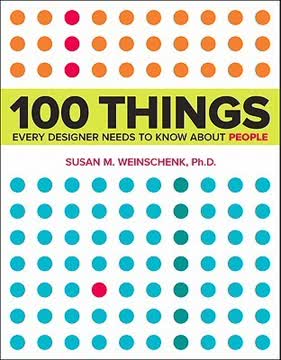
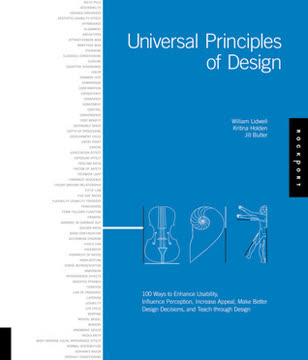
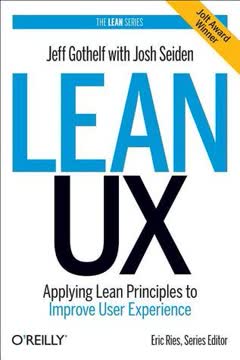
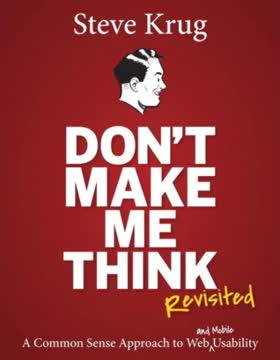

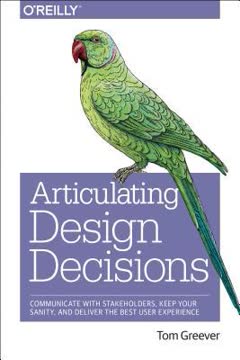

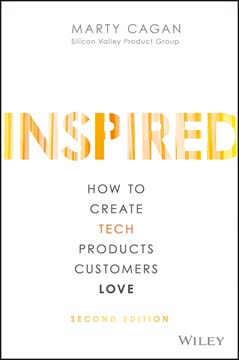

Download PDF
Download EPUB
.epub digital book format is ideal for reading ebooks on phones, tablets, and e-readers.






